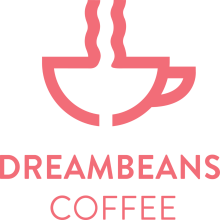Cold Brew Coffee.
Cold brew coffee: a global tale of taste and trend.
Cold brew coffee used to be only for the aficionados, or for people with too much time on their hands in the western US states. These days, however, it’s more like a parallel movement, something that complements mainstream coffee techniques, and cold brew coffee has undeniably become a global beverage phenomenon. This journey from being a slightly obscure preparation method to one of the world’s most sought-after coffee drinks is a testament to the ever-evolving world of coffee culture. Let’s have a look at the rise, spread, and persistent popularity of cold brew coffee.
The Chilled Beginnings
While the exact origins of cold brew remain a bit uncertain, it’s believed that the method dates back centuries, with traces found in Japan and Latin America. The Japanese, in particular, are well known for their Kyoto-style drip coffee, a cold brew method where water drips slowly through coffee grounds over several hours.
It wasn’t until cold brew started making waves in the innovative coffee shops of the U.S. West Coast during the 90s and early 2000s that it really started to get popular across the world.
A Cold Brew Revolution
What made cold brew stand out in a sea of coffee variations? It’s the unique brewing process. Unlike iced coffee, which involves brewing coffee hot and then chilling it, cold brew immerses coffee grounds in cold water for an extended period, usually 12 to 24 hours. This long extraction process results in a very smooth, less acidic beverage, capturing the subtle nuances of the coffee beans and making it a favoured option for those with sensitive stomachs.
As independent coffee shops began adding this mellow and highly caffeinated drink to their menus, its distinct taste and versatile nature (serve it straight, with milk, or even in cocktails) made it a hit among coffee enthusiasts.


Spreading the Cold Brew Craze
By the 2010s, the cold brew trend began spilling over from specialty coffee shops to mainstream chains. Some of the big international coffee chains like like Starbucks and Costa added cold brew options to their offerings, a sure sign that a niche trend was becoming mainstream. Several other factors contributed to the global spread.
- Social Media & Pop Culture: The visual appeal of cold brew – often showcased in clear glasses, highlighting its rich, amber hues – made it an Instagram favourite. As influencers and celebrities started sharing their cold brew creations, their global audiences were quick to catch on.
- Health & Wellness Movement: With a growing global focus on health and wellness, cold brew’s low acidity and natural sweetness (often requiring less sugar) made it a favoured choice among health-conscious consumers.
- Global Coffee Events: International coffee competitions, festivals, and trade shows began spotlighting cold brew, both as a drink and as an ingredient in culinary dishes, spreading its appeal.
A Rising Trend with No Signs of Cooling
In 2023, the cold brew trend shows no signs of slowing down. Several factors speak to its enduring popularity:
- Innovations in Flavor: From infusing cold brew with nitrogen to create a creamy, stout-like drink (nitro cold brew) to adding flavors like vanilla, caramel, or even botanicals, there are new ways emerging to enjoy cold brew.
- Retail Expansion: The commercial potential of cold brew hasn’t been lost on businesses. Supermarkets and convenience stores worldwide now stock bottled and canned cold brew, making it easier for consumers to grab and go.
- Global Adaptations: Different regions have begun adding their local touch to cold brew. For instance, in some Asian markets, cold brew is mixed with local ingredients like condensed milk or traditional herbs.
- Home Brewing: The simplicity of making cold brew has encouraged many to try it at home. With minimal equipment and a bit of patience, coffee lovers can brew their personalised batch.


